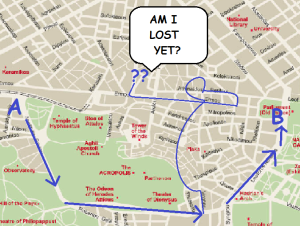It’s been 1796 days since I turned my back on Corporate America.
Okay, okay, so it turned its back on me. I got laid off from an IT job back on July 15th, 2009. Some days later, I woke up with an epiphany: I could either A) go back to the corporate world and be miserable for the rest of my life or B) I could do what I always wanted with this existence and take a shot at a writing career, risking the very real possibility of dying as a starving artist, but a happy one.
This month, the Fictorians are doing a sort of mileage-check on the goals we set back in January. We’ll be doing a wrap-up in December (for which I’ll be the cat-herder), but I wanted to focus on what’s happening this June. It’s a HUGE month for me. In it, I got my first pro contract for a short story and I got back the edits from a publisher who has picked up Chemical Burn (my first novel and a finalist in the Colorado Good Fiction contest back in 2010). But the biggest news is that I had not one but two titles come out on June 11th.
 The big one for me is Out Through the Attic, a short story collection that includes some of the best stories I’ve had published since I set out on this journey almost five years ago. It’s a cross-genre smorgasbord of science fiction, steampunk, paranormal, and fantasy shorts that I hope people come to love. The folks over at 7DS Books were interested in picking it up, so now I have the opportunity to share it with the rest of you. They liked it so much that they asked me to write a novel for them, which should be out by late summer or early fall.
The big one for me is Out Through the Attic, a short story collection that includes some of the best stories I’ve had published since I set out on this journey almost five years ago. It’s a cross-genre smorgasbord of science fiction, steampunk, paranormal, and fantasy shorts that I hope people come to love. The folks over at 7DS Books were interested in picking it up, so now I have the opportunity to share it with the rest of you. They liked it so much that they asked me to write a novel for them, which should be out by late summer or early fall.
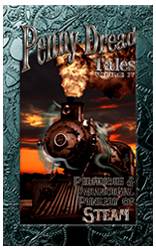 The big news for my imprint, RuneWright LLC, is the fourth volume of Penny Dread Tales, namely Perfidious and Paranormal Punkery of Steam. It’s a journey through the darker byways of steampunk, with a host of demons and necromancers, where heroes and villains get their hands—and even their souls—just a bit sullied. On top of the fourth installment coming out and because the PDT series has gone so well, K.J. Anderson over at WordFire Press wants to do a “Best of PDT,” which I hope to see in print by early fall.
The big news for my imprint, RuneWright LLC, is the fourth volume of Penny Dread Tales, namely Perfidious and Paranormal Punkery of Steam. It’s a journey through the darker byways of steampunk, with a host of demons and necromancers, where heroes and villains get their hands—and even their souls—just a bit sullied. On top of the fourth installment coming out and because the PDT series has gone so well, K.J. Anderson over at WordFire Press wants to do a “Best of PDT,” which I hope to see in print by early fall.
And all of this in June.
So, how did this happen?
Ultimately, the answer isn’t an easy one. In order to get here, a writer has to be willing to sacrifice… at least most of us, anyway. Some get lucky and land a big book deal right out of the gate. But most writers, the ones you love, worked their fingers to the bone for years in order to put your favorite novel on your bookshelf. There’s the long hours, the working a day job (or two of them), with writing and editing and conventions and social media and everything else that goes with running a sole proprietorship as a writer.
That’s the answer, by the way. Every writer you know is running a business—often times all alone or with the support of a short list of people who believe in them (or at least tolerate the madness that is writing). I think that’s what you have to be prepared to do if you’re going to set your feet upon the path of “writer.” And I say the following with a great deal of humility and respect: if you’re not willing to sacrifice for years, you should save yourself the trouble and get out of this business now, because the odds are you have three or five or ten years of grinding away, day after day, in your future.
Either you’re in it for the long haul, or you’re losing time with your loved ones for little or no reason.
I can say this, however. Inertia is one of your best allies. If you keep grinding… keep writing… keep submitting… keep getting one rejection letter after another until things start to pop for you, then the odds are that you are going to make it… in one form or another. There are varying degrees of success, and I’ve set my sights upon snow-birding in a small home in an equatorial region, but the truth is that you just need to keep at it, every day like it’s your job… because it is your job.
Make that choice with both conviction and open eyes, and you almost can’t miss. I pretty much bet my house on it. I have a long way to go, and it’s my hope that more and more people buy the books that I put out there into the world. The more they do, the closer I get to my own dream, and the easier it will be for me to cut out the other two jobs I work and focus on my writing. I want to give you all two books a year, and twenty or thirty short stories on top of that. Each year, every year, for the rest of my life.
That’s what it is to be a writer… of hoping that your writing gets good enough and is well received enough to allow you to give everything you have to the people, the readers, who help you maintain the madness of writing.
Now go write something. Or read something. This is the best business in the world, and each and every one of you has your part to play in it.
Q

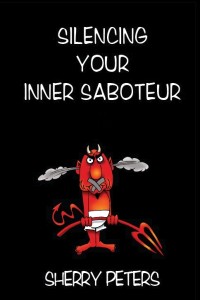 Be sure to read
Be sure to read 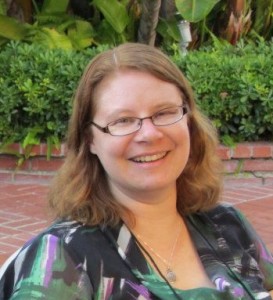
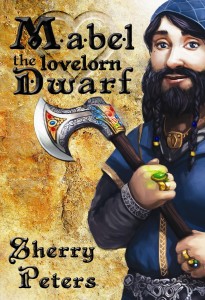 This was not my plan. A part of me still wants to be rescued from this and put back on the track that was supposed to be. But the more I learn about the business of self-publishing, the more I realize that even authors on the track-that-was-supposed-to-be have to go through much of the same. And I’m a bit of a control freak at times, so being in control of every aspect of publishing my book is fabulous and terrifying at the same time.
This was not my plan. A part of me still wants to be rescued from this and put back on the track that was supposed to be. But the more I learn about the business of self-publishing, the more I realize that even authors on the track-that-was-supposed-to-be have to go through much of the same. And I’m a bit of a control freak at times, so being in control of every aspect of publishing my book is fabulous and terrifying at the same time.